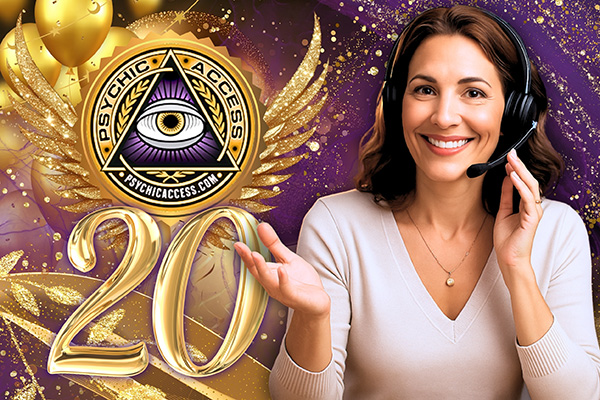 Does it seem like the cosmos has been pulling a trick on you recently? Perhaps your device has begun to misbehave, your travel arrangements have shifted unexpectedly, or every chat feels like a bewildering game of telephone?
Does it seem like the cosmos has been pulling a trick on you recently? Perhaps your device has begun to misbehave, your travel arrangements have shifted unexpectedly, or every chat feels like a bewildering game of telephone?
You’re not just imagining things, and you are certainly not alone. You can attribute it to the astrological event known as Mercury Retrograde.
Mercury commenced its ongoing retrograde movement in the sign of Leo on July 18, 2025. This period will persist for 24 days, concluding on August 11, 2025, with Mercury still situated in Leo as it resumes direct movement.
However, this energetic transition does not end there. Following Mercury’s direct station, we enter into the shadow phase, often referred to as the post-retrograde shadow or retroshade. This stage typically endures for around two additional weeks, implying that the aftereffects of the present retrograde may last until August 25, 2025.
Mercury retrograde takes place three or occasionally four times annually due to the planet’s rapid orbit around the Sun. As the closest planet to the Sun, Mercury completes this journey in merely 88 Earth days.
During its retrograde stage, Mercury appears to be moving backward in the sky from our earthly viewpoint, creating a temporary disruption in its usual energetic impact. Since it is the planet that governs communication, travel, and information, its retrograde course tends to stir confusion, delays, and misunderstandings in these aspects of life.
Though this astrological occurrence has become a common target for daily mayhem, it also holds a much deeper spiritual essence. Beyond the communication breakdowns and delays lies a sacred invitation. When we opt to slow down and listen, this duration provides a potent opportunity for reflection and personal realignment.
The Mercury retrograde phase can be seen as a period of reversal, review, and contemplation. While this may feel disconcerting for some, it also offers a chance for self-examination and correction ~ Nadiya Shah
Mercury’s retrograde motion serves a purpose beyond being just a peculiarity of the universe. Spiritually, it urges us to pause and reassess. This isn’t the prime time for launching new projects or making hasty decisions. Instead, Mercury retrograde calls for contemplation on what might have been overlooked or left unaddressed.
It’s a moment to reconnect with old acquaintances, forgotten concepts, or your inner intuition. It’s time to inquire what needs to be revisited, what requires fine-tuning, and where you may have strayed from your deeper essence.
Yet in a society that glorifies relentless forward movement and advancement, many find it difficult to embrace the slowdown and look back. We often forge ahead during planetary retrogrades, even while the universe subtly encourages us to take a step back. This typically results in confusion, delays, and breakdowns.
Mercury retrograde isn’t designed to create disorder. It exists to steer us inward and assist us in progressing with enhanced clarity. If you respect the pause, you may uncover insights that have been lurking beneath the surface.
Steering Through This Retrograde In Leo
What renders this Mercury retrograde particularly impactful is its occurrence in the dynamic, expressive sign of Leo. Ruled by the Sun, Leo governs creativity, self-expression, leadership, and personal identity. As Mercury retraces its path through this assertive sign, it encourages us to reflect on how we present ourselves in the world and whether our public persona aligns with our soul’s truth.
Leo energy craves visibility, appreciation, and affection. During this retrograde, however, the pivotal question becomes: Are you expressing your true self, or a version molded by ego, external approval, or outdated roles? This moment is ripe for reclaiming your voice, refining your creative endeavors, and reassessing what leadership symbolizes for you.
Stay aware of drama, both internal and external. Leo can amplify emotional reactions, particularly when pride is at stake. Instead of responding from a wounded sense of self, engage in heart-centered dialogue. Return to your inner illumination. Rekindle your passions not for recognition, but for meaning.
This retrograde also serves as a cosmic prompt to slow down and reevaluate the narratives you hold about yourself. Are you living your authentic reality, or merely projecting a version of it? Realign your inner story to better reflect the bravery and brilliance of your soul.
While it may not be quite time to take action, it is an excellent period for planting fresh seeds, jotting down new ideas, and establishing new intentions regarding how we communicate, think, and share what resides in our hearts and minds ~ Moon Omens
Mercury Retrograde, Impatience & The Ego
<pI recently collaborated with a client who was gearing up to launch a new wellness initiative. She reached out to me during a Mercury retrograde, seeking psychic guidance regarding the launch timing. Her energy was fiery and ambition-filled. However, the intuitive message I received was unmistakable: “Not now, not yet.”
Spirit revealed that there were still deficiencies in the structure of her program. Her branding seemed scattered. Ironically, Mercury retrograde provided her an ideal opportunity to revisit, refine, and realign. I suggested that she hold off until Mercury went direct.
However, she was eager to get going. Financial stresses, aspirations, and professional deadlines all converged. Against her own inner awareness and the reading’s insight, she opted to press forward.
Within a week, the warning signals became apparent. Her website crashed repeatedly. The payment system had problems, double-billing some customers while failing others. Customers misinterpreted the core message of the offer, leading to confusion. The program launch morphed into a logistical disaster, producing unnecessary stress and setbacks.
After Mercury turned direct, we reconvened. She paused, took a step back, and completed the tasks she had initially overlooked. She refined her messaging, simplified her offer, and deepened her understanding of her “why.” A month later, she relaunched. This time, the energy flowed smoothly. Clients felt connected and enthusiastic. Her confidence returned. The contrast was remarkable.
Her experience serves as a potent reminder: Mercury retrograde isn’t out to thwart you. It’s attempting to capture your attention.
Sometimes we hasten through life without fully considering our underlying assumptions or actions. Mercury retrograde presents us the chance to pause, assess, listen, and redirect our energies more effectively. Mercury also assists us in gaining closure in certain situations ~ Susan Miller
How To Navigate Mercury Retrograde
Mercury retrograde encourages you to take the scenic route. Rather than hurrying to your destination, you are urged to decelerate, notice the details, and revisit areas you may have overlooked. Here are some suggestions to help you move through this period with grace:
✵ Revisit old projects with renewed perception. Something you placed on hold months ago might now unveil its true potential.
✵ Reflect on communication styles or recent disputes. What requires a different approach? What wasn’t understood the first time?
✵ Back up your devices and meticulously check your messages. Prevention is powerful. Confirm timings, dates, and particulars.
✵ Refrain from launching new initiatives or signing contracts unless they have been reviewed thoroughly. If necessary, seek advice from trusted mentors for cross-verification.
✵ Trust your instincts. If anything feels “off,” respect that sensation. Your inner compass is especially attuned during this time.
Consider Mercury retrograde as a spiritual reassessment. It isn’t about halting progress. It’s about ensuring your foundation is robust. When you attempt to force clarity or rush through uncertainty, you frequently find yourself backtracking later, exhausted and disheartened.
Yet when you embrace the invitation, this period transforms into a powerful ally. It aids you in clearing away what no longer supports you, healing lingering misunderstandings, and returning to your path with enhanced integrity and intention.
So when Mercury enters retrograde, don’t fret. Cultivate curiosity. Ask yourself: What am I being called to revisit, revise, or realign? Where have I overlooked my inner guidance for external pressures? This isn’t a moment to fear. It’s a moment to experience. To listen. To recalibrate. To remember that you are not falling behind. You are simply being rerouted to something more harmonious with your soul’s journey.
Mercury retrograde doesn’t dismantle things to be spiteful. It dismantles what requires mending. It illuminates what has remained unspoken or incomplete. And it provides you with an opportunity to move forward with increased wisdom. Allow this retrograde to be your sacred interlude. Reflect, reset, and trust the timing of your existence. The universe isn’t denying you. It’s preparing you.
|
 About The Author: Mystic Shelley About The Author: Mystic Shelley
Mystic Shelley is a five-star psychic, a Reiki healer, clairvoyant, and an empathic reader. She provides her clients with honest insights about past, present, and future occurrences with the assistance of her trusted guides. She specializes in love, relationships, career, financial matters, and all facets of life. Although Mystic Shelley was endowed with talents that later defined her as a gifted psychic, she initially hesitated to accept them. In her 30s, a fortuitous meeting with a prominent psychic set her on a transformative path awakening her abilities. With gifts of clairvoyance and empathy, her psychic mentor helped her expand these skills, elevating her talents to new heights. As experience accrued, proficiency followed, and today, she boasts a growing clientele that praises her gifts. Furthermore, she actively supports fellow psychics in uncovering their abilities. If you seek clear and honest guidance, receive a reading from Mystic Shelley now at PsychicAccess.com
|
Mercury retrograde is a cyclical event occurring three to four times a year when the planet Mercury seems to move backwards in its orbit around the sun. This visual phenomenon arises from the relative positioning of Earth and Mercury in their orbits, producing an illusion of retrogression from our perspective on Earth. Although this may appear to be merely an astronomical incident, many believe that Mercury retrograde significantly influences our lives and communication.
The essence and significance of Mercury retrograde often revolve around revisiting, reflecting, and realigning. During this timeframe, it is thought that the energy of Mercury retrograde can lead to disruptions in communication, technology, and travel. This may culminate in misunderstandings, delays, and aggravations across various life areas. Nonetheless, numerous astrologers and spiritual practitioners view Mercury retrograde as a chance for growth and self-reflection.
Revisiting stands out as a crucial theme during Mercury retrograde. This serves as an occasion to revisit previous experiences, relationships, and decisions. It provides an opportunity to contemplate past events and extract lessons from them. By addressing old wounds or unresolved matters, we are able to enhance our understanding of ourselves and our behavioral patterns. This could facilitate healing and closure, enabling us to progress with a clearer sense of purpose.
Reflection is another vital element of Mercury retrograde. It is a time to pause and analyze our thoughts, feelings, and actions. By taking a step back and engaging in introspection, we gain clarity regarding our motivations and desires. This process of self-reflection allows us to make more informed choices and decisions moving forward. It’s an opportunity to decelerate and heed our inner voice, aligning ourselves with our authentic objectives and values.
Realignment represents the concluding phase of Mercury retrograde. This is a time to synchronize our thoughts, beliefs, and aspirations with our true essence. By releasing outdated habits and limiting beliefs, we clear a path for new opportunities and growth. This period is ideal for setting intentions and goals for the future that are informed by insights gained through the Mercury retrograde experience. By reconnecting with our genuine self, we are poised to advance with purpose and confidence.
In summary, the meaning and intent of Mercury retrograde center on revisiting, reflecting, and realigning. This astrological occurrence offers us the chance to slow down, reevaluate, and realign with our authentic purpose and values. By embracing the energy of Mercury retrograde, we can gather valuable insights and implement positive changes in our lives. Therefore, the next time you notice Mercury seeming to move backwards, remember to use this period wisely for reflection and personal evolution. Continue reading →
















